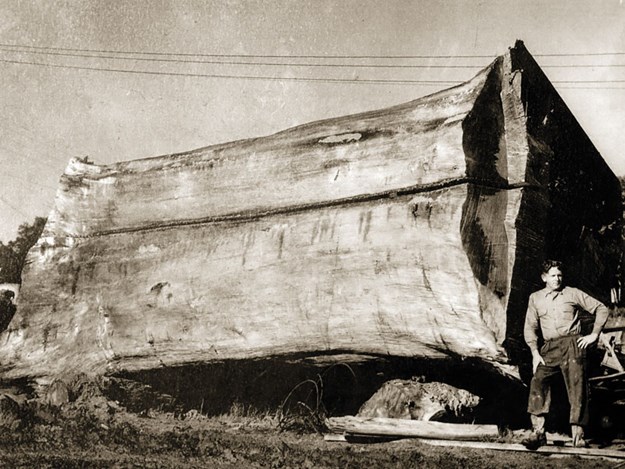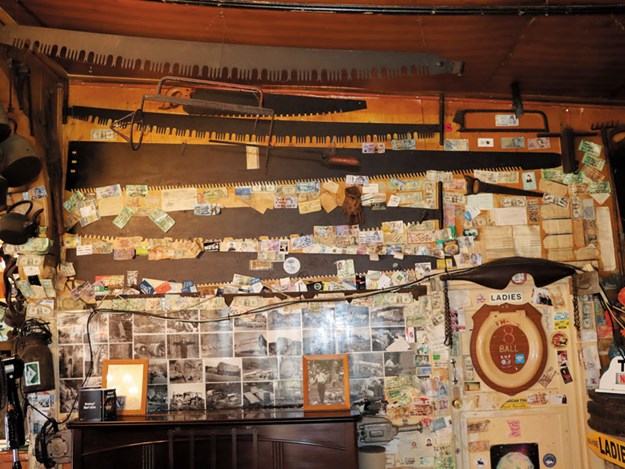Forestry commentary: Puhoi's logging connection
Deals on Wheels visited the annual woodchopping carnival in Puhoi for a quick look at the region's logging history
The annual woodchopping carnival was held in Puhoi during early January, which required a visit. This was an opportunity to have a look at its history and just see how much logging was done in the area.
.jpg) |
|
The woodchopping festival is held in Puhoi in January every year
|
Located just off State Highway 1, some 30 kilometres from central Auckland, I’ve always thought of Puhoi as a fun, funky place to visit or go to the cheese factory for lunch. We’ve all heard of the place and most have stopped in for a cuppa tea or beer at the local pub on the way past.
But before I delve more into the annual event, let’s dig a little deeper to find out the history of Puhoi.
It was populated by early European settlers of one primary ethnicity, in this case, Bohemian. Another location I can think of is Akaroa in the South Island, which was settled by French immigrants in 1840.
According to my research, the Bohemian people started their epic journey in Europe in 1863 and arrived in late June 1863, with the expectation of what the land of plenty and the colonial government at the time was offering: 40 acres of land and 20 for each child was an offer too good to be ignored.
The Bohemians were part of the Austro-Hungarian empire of what’s now part of the West Czech Republic. They spoke a dialect similar to that found in North Bavaria and did not consider themselves Germans, but Bohemians who had settled in that area in the 12th Century.
A group of settlers left Europe on the ship called the War Spirit for the 106-day journey to New Zealand; none from the group had been on the sea before. The ship was well-provisioned, and it was an uneventful trip, until they reached the Tasman Sea when one from the group, a father of five, was killed when freight came loose in a storm and crushed him.
 |
|
Early European settlers came to Puhoi in 1863
|
Arriving in Auckland, they were stunned at the rawness of this new land, and some wanted to return home. Two days later, they were taken by cutter to the mouth of the Puhoi River.
Local Maori picked them up and ferried them up the last four miles of the Puhoi River to what they were expecting was open pasture and developed farmland, only to find dense native wilderness full of kauri, totara, and other species.
The dream must have quickly evaporated before their eyes, and with little money, food, and equipment, they had no choice but to start the arduous task of clearing the land, building shelter, and trying to earn cash for essentials.
The local Ngati Rongo showed them how to gather food and live off the land. Without the help of the Ngati Rongo and their generosity in gifting food, I’m sure the new arrivals would have found survival near impossible.
With the amount of timber available, firewood was the easiest but hardest way to start making money. We must remember these people, who were farmers, were now faced with a massive logging programme. In the process of clearing the land, they logged some 16,520 cubic metres of kauri, with most being sold to Auckland as roof shingles and logs. Photographs show the logs were floated down the Puhoi River as there were no formed roads to Auckland.
 |
|
The settlers were faced with a massive logging programme, as the land could not be farmed until logging was complete
|
Through circumstances unbeknown to them upon arrival at Puhoi, did they for one minute think they would have to develop logging skills. Although this would not have been an exclusive club with New Zealand covered in native forest, many of our early settlers would have been required to gain this skill as the land could not be farmed until logging was complete. Logging was the cash cow that built our future.
It’s interesting to note that from the isolation, the Kiwi phrase "up the boohai" originated through the corrupt pronunciation of Puhoi, meaning "the back of beyond."
Stepping forward 150-plus years, we’re back in the present day, notably Puhoi’s annual wood chopping event, of which you now understand a little of the history behind the event.
Hosted by the Puhoi Axemens Club and held in January each year, it reflects on the early logging days in the area, the humble axe and saw being the primary tools of the day. Competitors come from as far as Taranaki and Whangarei in the north. The competition is fierce in the underhand, standing, jigger chop, and crosscut hand saws; it’s a great spectator sport.
The iconic Puhoi pub is under new management after the last owner of 60 years sold the business. To date, nothing has changed, with the memorabilia thick on the walls and ceilings. If it wasn’t for the TV and a few other modern bits and pieces, you would believe you have stepped back in time.
Travellers from all over the world have left banknotes with handwritten notes on them, the old horns names and boards of the bullocks, and photos of the drivers shows the tough conditions of extracting native logs.
I recall stopping at the Puhoi pub back in the ’80s for a beer. The owner was behind the bar and started throwing breadcrumbs onto the floor inside the bar. Not long after, sparrows wandered in and started eating the bread. Next minute, the owner pulls out a slug gun, cocks it, and starts to shoot the sparrows. We all stood back mouths open wondering what the heck was going on. Turns out, it was just a daily show with no pellets in the gun. I just could not imagine if that were to happen today.
 |
|
Memorabilia on the walls of the iconic Puhoi pub
|
Looking into the history of Puhoi has been a revelation. How tough were those first settlers, eh? They must have been of strong character with huge values of sharing and helping their fellow settlers in the development of a raw wilderness. It’s something most of us would struggle to comprehend. From nothing to a herd of more than 700 cows in 20 years, encouraging more of your countrymen to also immigrate was a testament of their fortitude.
If some of the old Bohemians were still alive today, I’m sure they would shake their heads in wonder that the hard-fought recovery of native wilderness is now covered in pine trees.
There are remnants of native bush just off Remiger Road, where you can still enjoy viewing mature kauri, puriri, and totara trees and get a small understanding of what those Bohemians must have felt in 1863.
Find new and used machinery for sale in NZ
Keep up to date in the industry by signing up to Deals on Wheels' free newsletter or liking us on Facebook.











.jpg)
.jpg)
.jpg)


